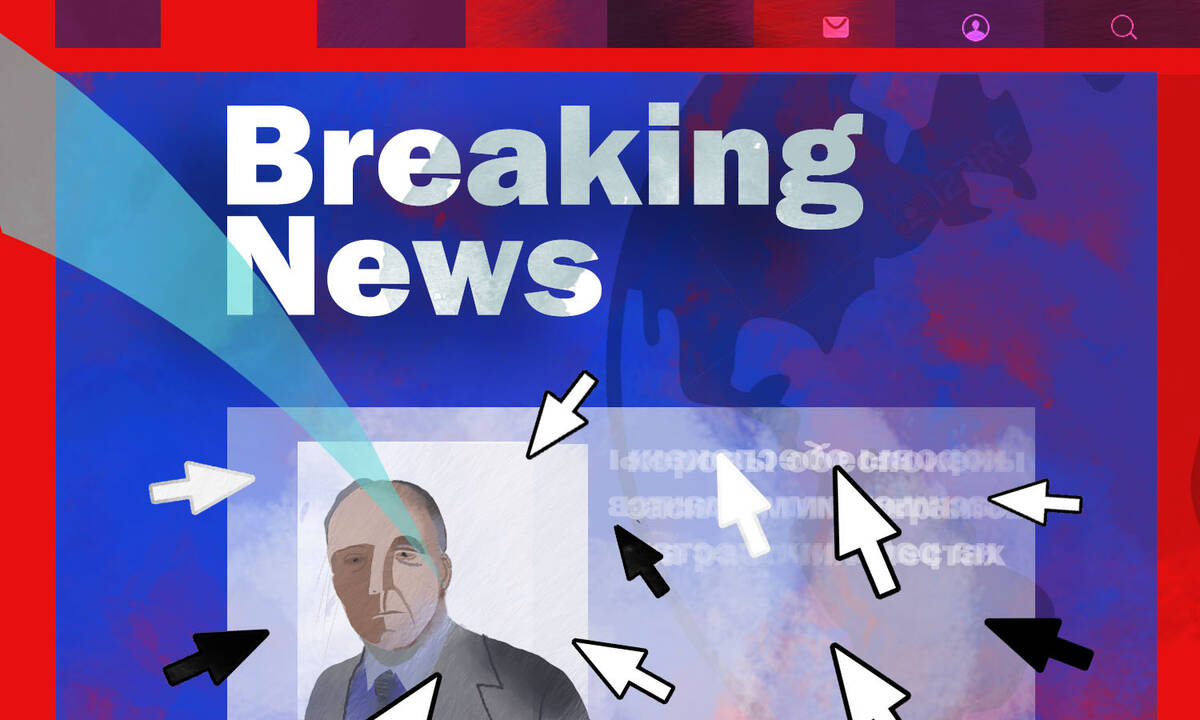Marketing Apr 1, 2022
To Boost Engagement, News Orgs Need to Reconsider the Click
Not all pageviews are equal. Indeed, some clicks actually spur people to unsubscribe from a site.

For news outlets, one measure of success reigns supreme: the click. Companies that provide online content religiously track metrics such as the number of pageviews for each article on their site, and often use those numbers as an indicator of user engagement. As ad revenues decline, the ultimate goal is engaging readers to boost subscriptions—so if total clicks increase, the thinking goes, so will revenue.
“They’re living and dying by these clicks,” says Bobby Calder, a professor emeritus of marketing at Kellogg. “They fire people if they don’t get clicks.”
But in a study of U.S. local news outlets, Calder and his colleagues argue that engagement can’t be measured simply by the volume of clicks. They define engagement as the meaningful experiences that a user might get from a piece of content. For instance, some people might value a comforting routine of reading the news regularly, while others value knowing what’s happening in their local community.
In two studies, the researchers found that people who read the news for those two reasons—which they call regularity and locality—were more likely to pay for a subscription than people who read for other reasons. In fact, they even found evidence that reading articles unrelated to regularity and locality could actually increase the likelihood that someone would cancel their subscription. While the researchers don’t know exactly why these reading experiences can be so displeasing, one possibility is that those articles were generic filler material that didn’t seem worth paying for. “They’re turning people off,” Calder says
News organizations need to look beyond the total number of clicks to assess whether readers are truly engaged, the team concluded. “Only some of the clicks matter,” he says.
Calder and his colleagues provide a roadmap for news organizations to follow to ensure that their readers are getting what they want, and allowing the publication to stay profitable.
What Will People Pay For?
Local news coverage in the United States has plunged over the last couple of decades. From 2008 to 2018, the number of staff at these newsrooms dropped by nearly half. Today, about two-thirds of US counties don’t have a local daily paper anymore. This trend has stoked concerns that citizens are less informed about their communities and thus less likely to participate in civic activities.
Ad revenue has also dropped, meaning newspapers have had to figure out how to boost subscriptions. “You’ve got to get people to pay, or you go out of business,” Calder says.
Attracting subscribers requires increasing engagement, which the team defines as the cumulative effect of experiences that connect with a user’s values or help them take a step toward a goal. But the experience that people want to get out of any particular purchase can vary depending on what they’re buying. For instance, they might buy a stapler for purely utilitarian purposes, a teapot because it’s beautiful to look at, or knitting needles so they can join a crafting group. Often, they seek multiple experiences from the same purchase, so they might buy an item that’s both useful and aesthetically pleasing. In short, a key to branding any product is understanding the experiences that engage people in relation to that product.
So what kinds of experiences do people want to get from reading the news?
Calder, Edward Malthouse at Northwestern University, and other researchers had explored this question in earlier studies. Some participants liked the routine of reading the news regularly, or they said that the articles gave them topics to talk about with their spouse or coworkers. Other participants valued the experience of being more aware of their local surroundings, feeling connected to a community, immersing themselves in a different world, obtaining useful facts or advice, or learning something new and surprising.
But which experiences actually lead people to pay for a subscription? To find out, Calder and Malthouse turned to a data set they had collected in a 2012 study. Their team had surveyed about 11,000 people who read local newspapers in the United States. Some participants were subscribers, while others read only content they could get for free; the researchers also tracked who had cancelled their subscription during the study period.
In that survey, the researchers asked people to rate on a scale from 1 to 7 how strongly they agreed with statements that they read the news for the various experiences identified in earlier work—for example, those related to regularity, locality, conversation topics, and so on. The higher the score, the more strongly the person agreed that they read the news for that reason.
For the current study, Calder and Malthouse’s team analyzed which of the same factors were associated with willingness to pay. The team included Yayu Zhou, a PhD student at Northwestern, and Yasaman Kamyab Hessary, a postdoctoral fellow at Northwestern at the time.
They found that regularity had the strongest connection with subscribing (and not cancelling). That is, people who said they read the news because they enjoyed it as part of their regular routine were more likely to pay for the content. High scores for locality, feeling connected, and learning useful information also were linked to an increased likelihood of subscribing.
Good Clicks, Bad Clicks
The team now knew which factors people valued and were likely to lead to subscriptions. But how, exactly, would they assess whether a particular user was getting those experiences from the content at any given time?
Click data could still be useful. But instead of looking only at the total volume, the researchers wanted to identify specific click patterns that reflected those experiences.
“The only way to really detect engagement is to ask people.”
— Bobby Calder
They decided to focus on regularity and locality because the previous analysis had suggested those factors were among the most important in driving subscriptions. Regularity could be measured as the number of days that a person clicked on at least one article on a news site each month. And locality could be measured as the number of times the person clicked on articles that were tagged as covering local topics.
To confirm that the new click metrics were linked to people’s willingness to pay, the team obtained data on two online local news sites in the United States. One data set followed 3,160 subscribers for 26 months, and the second followed 6,994 subscribers for 13 months. For each user, the researchers could see which pages they had clicked on and when. They could also see which users had cancelled their subscription at some point during the study period.
The team converted the raw click data into monthly regularity and locality scores for each person. They found that if a user scored higher on those measures, they were less likely to cancel their subscription. Those two factors “keep people reading,” Calder says.
The team also examined “residual” clicks. These were all the clicks left over after they’d extracted the clicks associated with regularity and locality.
Those leftover clicks were associated with an increased likelihood of cancellation. “They actually make you stop reading the news,” Calder says.
The researchers didn’t tease out why those articles might be off-putting. But one possibility is that they were generic stories from a wire service, which would also be available from many other sources. People who clicked on those stories might have felt like they could get the same content for free elsewhere, leading them to cancel their subscription.
With those articles, “if you’re maximizing your clicks, you’re in effect maximizing your own demise,” Calder says.
Encouraging Regular Reading
Finally, the team investigated which interventions might help a newspaper increase regularity among its readers. For instance, perhaps creating a daily email newsletter would encourage a reading habit and keep subscriptions up.
To find out, they analyzed data on about 5,800 subscribers to another online local news site, which had established more than 600 newsletter lists. In the data set, they could see which users had signed up for which newsletter during the 16-month study period.
Signing up for newsletters on topics such as local news, sports, and family were linked to higher regularity. But the team couldn’t say for sure whether the sign-ups caused regular reading or if regular reading prompted people to sign up. To disentangle those possibilities, news organizations or researchers would need to conduct more experiments—for example, following a group of subscribers that can sign up for a newsletter and another group that cannot.
Smarter Metrics
The team suggests that news and other content providers follow a process similar to that used in this research to increase engagement.
First, interview readers or viewers to find out what experiences they want. “The only way to really detect engagement is to ask people,” Calder says. The answers might vary depending on the outlet and type of media; streaming video users might value immersivity the most, while readers of a home-improvement magazine might prioritize learning useful information.
Second, figure out how to measure those experiences. For instance, if people value learning about topics that they can bring up in social situations, a relevant measure might be the number of times an article is shared via email or social media. Or the news organization could tag articles as “social” if they cover conversation-generating topics such as a controversial political decision, and then track clicks on those types of stories.
Third, verify that those new measures are associated with a willingness to pay for subscriptions (or a decreased likelihood of cancelling). Fourth, tailor content to deliver more of those experiences. For example, if users value novelty, the outlet could seek out stories on surprising topics. Finally, monitor the new metrics and see if engagement rises as expected.
“You need to start really optimizing your content to be engaging for people if you want them to pay for it,” Calder says.
Roberta Kwok is a freelance science writer in Kirkland, Washington.
Zhou, Yayu, Bobby J. Calder, Edward C. Malthouse, and Yasaman Kamyab Hessary. 2021. “Not All Clicks Are Equal: Detecting Engagement with Digital Content.” Journal of Media Business Studies. June 9. doi: 10.1080/16522354.2021.1924558.



